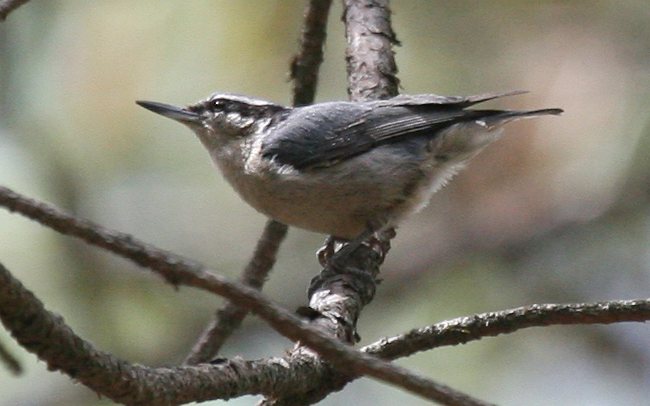Yunnan nuthatch
(Sitta yunnanensis)

Description
The climber of Yunnan (Sitta yunnanensis) is a species of passerine bird of the family Sittidae.The species reaches 12 cm in length,and does not present sexual dimorphism.The upper parts are grayish blue,in contrast to the lower parts sueded clear and joined.It has a thin white superciliary list,when it has changed plumage,and above a pronounced black eye line.It is a noisy bird,since it produces simple and nasal sounds,although also in repetitive series.Its ecology is little known: it feeds on insects and the reproduction takes place in the month of March.The climber of Yunnan is endemic to the southwest of Chin,very close to the border with Burma.Live in old pine forests up to 4000 m altitude.This is the most basal species of « canadensis group »,which also includes the Canadian climber (S.canadensis),the Chinese climber (S.villosa),the Corsican climber (S.whiteheadi),the climber of Kabilia (S.ledanti) and the Krüper climber (S.krueperi).The total population is not known,but it is probably in decline due to the destruction of their habitat.For these reasons,the International Union for the Conservation of Nature considers the bird as "almost threatened".The upper parts of the site are grayish blue,including the pileus although separated from the upper mantle by a paler area.The bird has a white and thin superciliary list,which extends to the front and on a black eye line,which expands significantly on the back,on both sides of the mantle.The eye is surrounded by a thin white circle.The cheek and throat are white.The lower parts are united and are pale,of color before- rose.The beak is prominent and pointed,and the culm almost straight to give the impression that the tip of the beak ascends.The irisIt is dark brown,the black grayish peak with the base of the lower jaw yellowish or ivory.The legs and feet are grayish black.The climber of Yunnan is small,and measures 12 cm in length.The folded wing of the male and the female measure,respectively,69.5 to 74 mm and 67 to 74 mm,35 to 41 mm and 36 to 38 mm in the tail.The peak measurement is 16.8 to 19.5 mm and that of the tarsus is 14.8 to 19 mm.Its weight is between 7.5 and 13 g.There is little sexual dimorphism,but the black eye line of the female is,on average,less intense and the lower parts are duller and gray.The plumage is renewed in August and little by little it wears out until the following spring.In worn plumage,the whitish feathers that form the ends of the superciliary list wear out,this and the ocular line becomes discontinuous or not evident.The upper parts are duller,less blue.The feathers of the tail and the wings also have bluish gray tips in the rectrices and these persist at least until May.The lower parts become cloudy and become increasingly "dirty",and take on a grayish white color.The young are more opaque than the adults,with the less pronounced superciliary list and does not extend to the front,sometimes almost absent and consisting of an edge of the lighter pileus.The eye line is also narrower,the cheeks have a dirty gray color and not white.The throat is white,but the rest of the lower parts are duller,of a grayish cinnamon,although less pale than an adult with worn plumage.The upper parts are duller and gray.The young peaks are shorter and have a pale base.The adults carry out a complete post-breeding moult (July-September) and perhaps sometimes a partial moult before the breeding season (January-February),which affects especially the breast.The giant climber (S.magna) can appear in the same type of habitat as the climber of Yunnan,but it is much larger and has no white superciliary list.The climber of the Naga (S.nagaensis) is similar in size to the climber of Yunnan,but it is reddish on the sides and has no white superciliary list.
Taxonomic tree:







